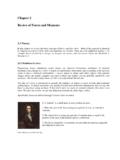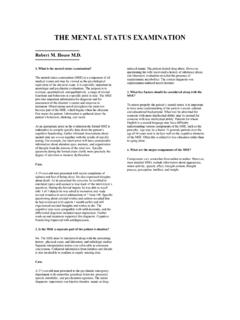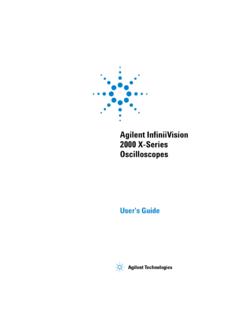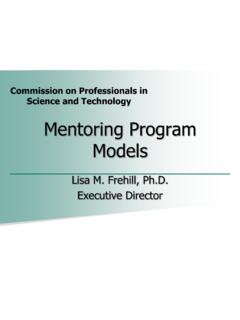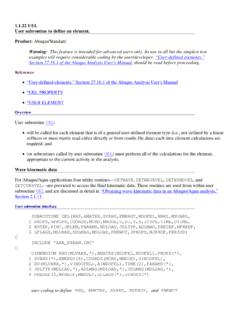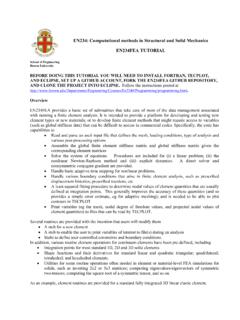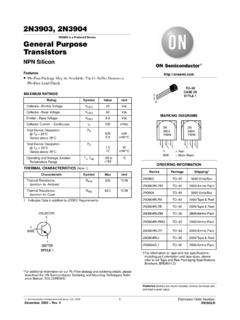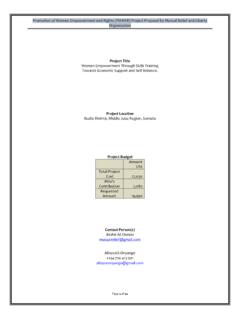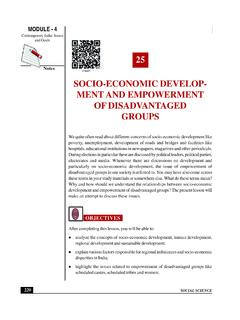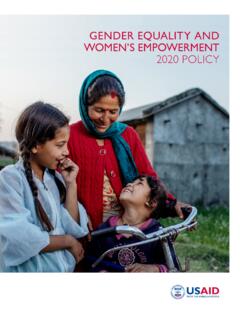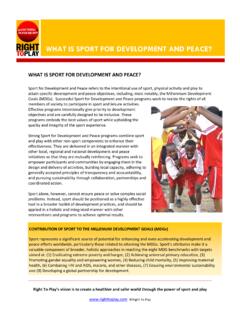Transcription of WHO IS THE COMMUNITY?/WHAT IS THE COMMUNITY?
1 WHO IS THE COMMUNITY?/WHAT IS THE COMMUNITY? Phil Brown Community-based participatory research (CBPR) has been one of the most exciting developments in public health and social science research, while becoming an important practical feature for people facing environmental hazards. CBPR has highlighted the importance of community-based knowledge, community rights to control data and research, and community participation (Israel et al 1998; Quigley et al. 2000; Shepard et al. 2003; Minkler and Wallerstein 2003). Researchers in this field are aware of conflicting definitions of community (MacQueen et al. 2001), though much of the literature focuses on the identification of stakeholders and the protection of community rights in the research process. Far less has been written about the definition and nature of communities.
2 Our widespread use of the term community often masks a multiple reality in which there are diverse types of communities, as well as differences within communities. By exploring different meanings of community, we can develop a fuller approach to this growing CBPR movement, with a focus on environmental justice and environmental health activism. For example, some definitions of community involve a geographic area, such as a neighborhood or a city, while others involve a group of people united by racial/ethnic/tribal identity, by a common social or political goal, or by a shared disease experience. These other, transgeographic, communities are central to much identity, awareness, and activism. This paper examine issues in both geographic and transgeographic communities. I am not discussing the benefits and drawbacks of geographic measures used in studying environmental inequality, since this is adequately discussed elsewhere (Greenberg 1993; Szasz and Meuser 1997; Krieg 1998; Mohai and Saha 2003), though I will discuss some recent work that points to historical differences as sometimes being more important than present geographic boundary differences.
3 Defining Communities The history of defining community is long and detailed. One scholar located 94 different definitions, and that was over a half-century ago (Hillery 1955, cited in Patrick and Wickizer 1995); there are doubtless many more definitions at present. I want to mention two recent studies that touch on interesting arrays of elements of the definition of community. MacQueen et al. (2001) conducted 113 qualitative interviews that asked people involved with community participation in HIV vaccine trials to say what community meant to them. The researchers used cluster analysis to examine the qualitative codes. Although this population is different than most environmental health and environmental justice populations, the rigorous methodology attached to these open-ended questions about the nature of community has important generalizability.
4 MacQueen s team found five core elements. 1) Locus, a sense of place, referred to a geographic entity ranging from neighborhood to city size, or a particular milieu around which people gathered (such as a church or recreation center). 2) Sharing, common interests and perspectives, referred to common interests and values that could cross geographic boundaries. 3) joint action, a sense of coherence and identity, included informal common activities such as sharing tasks and helping neighbors, but these were not necessarily intentionally designed to create community cohesion. 4) Social ties involved relationships that created the ongoing sense of cohesion. 5) 2 Diversity referred not primarily to ethnic groupings, but to the social complexity within communities in which a multiplicity of communities co-existed. MacQueen et al.
5 Note that the first four are similar to what numerous social scientists have previously found, but that the fifth element, diversity, was not previously identified. Perhaps more importantly, the researchers found that despite common identification of these core elements, respondents varied in how they perceived the importance of each. The chief implication of this is that community-based public health interventions need to operate on various levels, attending to varied definitions of community. Patrick and Wickizer (1995) examine a smaller set of three elements. 1) Community as place, notably a geographically bounded location; 2) Community as social interaction, in which social networks and social supports are crucial; 3) Community as political and social responsibility, involving political and social motives in the formation of communal groups.
6 They apply an integrated definition that includes all three, thus maintaining a geographic status. Perhaps their necessary inclusion of a geographic element is driven by a concern that a broad community with unobserved boundaries may be less amenable to community-level public health interventions. This is true, if the intervention involves something like home visits to take air and dust samples. However, if we take a larger view, and consider as an intervention the placement of breast cancer activists on federal review panels, then the unbounded definition of community works well. Patrick and Wickizer are also concerned that non-bounded communities may be transitory and may lack sufficient connections and commitment to bring forth the social supports that we expect of communities. Again, we must look at this in terms of how transgeographic communities work in practice.
7 Many disease support groups and health social movement organizations function at a high level of social support, and for some disease groups internet-based and other non-local connections are the primary source of support since people may not be near other people with the same disease. From my interpretation of MacQueen et al. (2001) and Patrick and Wickizer (1995), I take away several important elements of community: 1) Communities include a variety of geographic and transgeographic groupings, and sometimes involve a mixture of both types; 2) Whether bounded or un-bounded, communities only function effectively when they provide social support through social networks; 3) Communities generate collective social action, but are also formed as a result of such action; and 4) Community definitions change, even over a short time period.
8 I now turn to examining how these concerns play out in both geographic and transgeographic communities. Geographic Communities Geographic Communities are More Than Geography Much of environmental justice research has been driven by geographical notions of community, census tracts, zip codes, counties. For some scholars, one of the drawbacks in environmental justice research is the wide variety of definitions of community. For others, the very diversity of measures of community attests to the widespread corroboration of environmental inequity. Still, there remain considerable methodological problems with much of this work, and recent developments promise more precise approaches to measurement (Mohai and Saha 2003). Even in the face of some problems in method and measurement, there is broad acceptance that environmental inequality is a common feature of American life.
9 But the mere existence of such inequality does not tell us much about the nature of the area, nor its ability to 3organize. Also, as I will discuss, historical differences can be more important than present geographic boundary differences. A geographic community facing an environmental problem is not simply a physical location of census tracts, or a neighborhood bounded by certain streets and geophysical features. After all, the mere collection of buildings and households does not provide a social phenomenon that can organize itself and wield power. Successful environmental justice struggles have benefited from the social cohesion and broad coherence of neighborhoods or municipalities, and the vehicle for such coherence is a community organization or a grouping of such organizations. We know that many communities suffer environmental assaults, but that only a small fraction of them are able to mobilize to deal with those problems.
10 Strong individual leaders are often important, but without some organizational form they cannot do much. Successful environmental health struggles have benefited from the social cohesion and broad coherence of neighborhoods. Toxics activists have often noted the incredible social support provided by the local organization. Often, that support stemmed from the fact that the activist group was the only reliable source of information and/or interpreter of health data. Indeed, such groups function to create communities of toxic sufferers that have not existed before. The creation of such communities stems from the collective recognition that the problem especially if it involves illness is not an individual trouble, but rather a social problem. This is a difficult step for many people to make, since the typical community group-in-formation is composed of people who have not had prior experience in political organizing and are not used to such a collective outlook on attributing responsibility.
